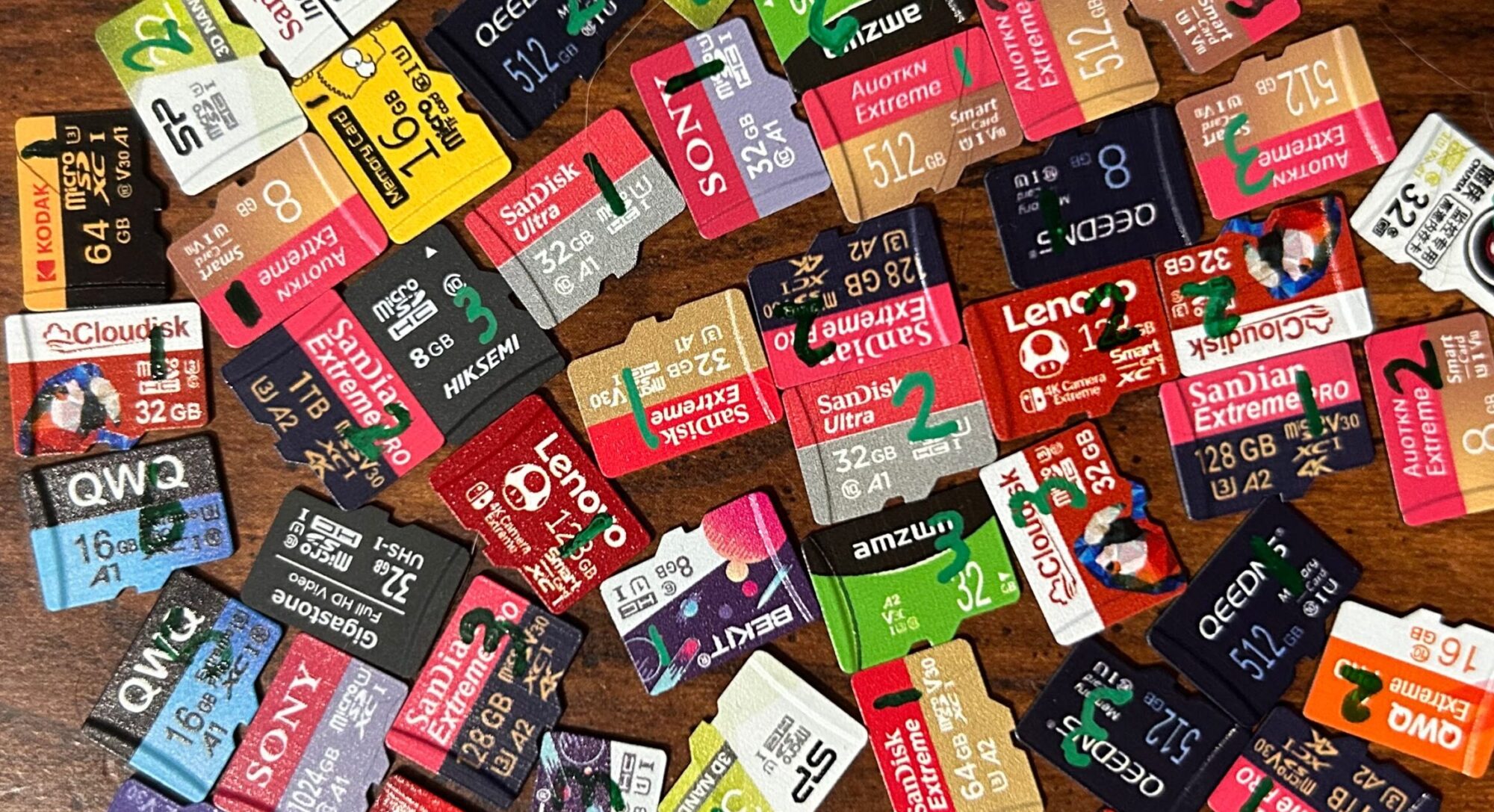ADATA is a brand that I’ve come across a few times now, during both my Amazon and AliExpress searches. They appear to be a fabless manufacturer based out of Taiwan. Seeing as how they’re a member of the SD Card Association, I’ll lump them in with the “name-brand” cards.
There appear to be (at least) two versions of this card floating around out there, possibly from two different manufacturers. One appears to be a little bit older (from early 2021), while the newer version is more recent (early 2023). Both versions performed about the same on sequential read tests; however, the older version scored slightly worse on sequential write tests, slightly better on random write tests, and significantly better on random read tests. On the downside, it was skimpier than the newer version.
Performance results for these cards were kinda all over the place. For example, as I mentioned above, sample #1 got a random read speed that was almost three times higher than the other two. Sample #2 also got pretty horrible read speeds on its first attempt, but were more in line with the scores from sample #3 on the second attempt.1 With the exception of sequential read speeds, performance scores for samples #2 and #3 were all below average.
On the endurance testing front:
- Sample #1 went for quite a while without any issues — albeit pretty slowly, because it was plugged into the same reader as sample #2 for the longest time. (Sample #2 was stuck giving constant I/O errors — so the reader was spending most of its time dealing with those instead of communicating with sample #1.) However, once I moved it to its own reader, it continued right along until it got to round 3,779 — at which point about 1,100 sectors experienced bit flip errors. This continued for only a few more rounds: during round 3,791, the card made itself read-only. Only about 0.06% of the card’s sectors had failed by that point.
- Sample #2’s first error was a series of bit flips, affecting two sectors, during round 1,559. Sometime around round 1,658, it started running into a large number of I/O errors when trying to read back the data on the card. I let it run for quite a while — almost 8 months, actually — thinking that maybe the issue was only with certain sectors, and that if I let it run for long enough, it would identify all of them and flag them as bad. However, during round 1,665, the card finally decided to make itself read-only.
- Sample #3’s first error was a 42,624-sector wide address decoding error during round 1. It continued to experience sector degradation over the following rounds, until it got to the point — during round 1,603 — where it stopped responding to commands. By that point, about 6% of the card’s sectors had failed.
So overall, I think I’d have to say I was a little disappointed in these cards. While skimp and sequential write performance improved from the 2021 version to the 2023 version, it came at the cost of random I/O performance — which went down considerably. (And to top it all off, the improved sequential write speeds were still below average.) Endurance for all three was below average, with the 2023 model being considerably worse for endurance — neither of the two 2023 cards made it to the 2,000 read/write cycle mark before failing completely). The price wasn’t bad…but in the end, it ended up being beaten out in pretty much every metric (price included) by the Lexar Blue 633x. If I could rate the 2021 model and the 2023 model separately, I think I would give the 2021 model a “meh” and the 2023 model a “don’t buy”. However — given that there’s no way to tell which version you’re going to be getting (and that, as time goes on, you’re going to be less likely to get the 2021 version and more likely to get the 2023 version), I think I’d have to rate these as “don’t buy”.
1I don’t normally re-run performance tests — because performance can go down the longer a card has been in use — however, this card is being tested on my son’s server, on which he had some other workloads going that might have affected the outcome, and he needed to reboot the machine shortly after the endurance test started. This meant that I had to start my program over from scratch, because my program will refuse to resume from a save state if the endurance test hasn’t completed at least the first round of testing. The results of the second performance test came out much better, so I decided to go with the results of the second performance test.
June 11, 2025

